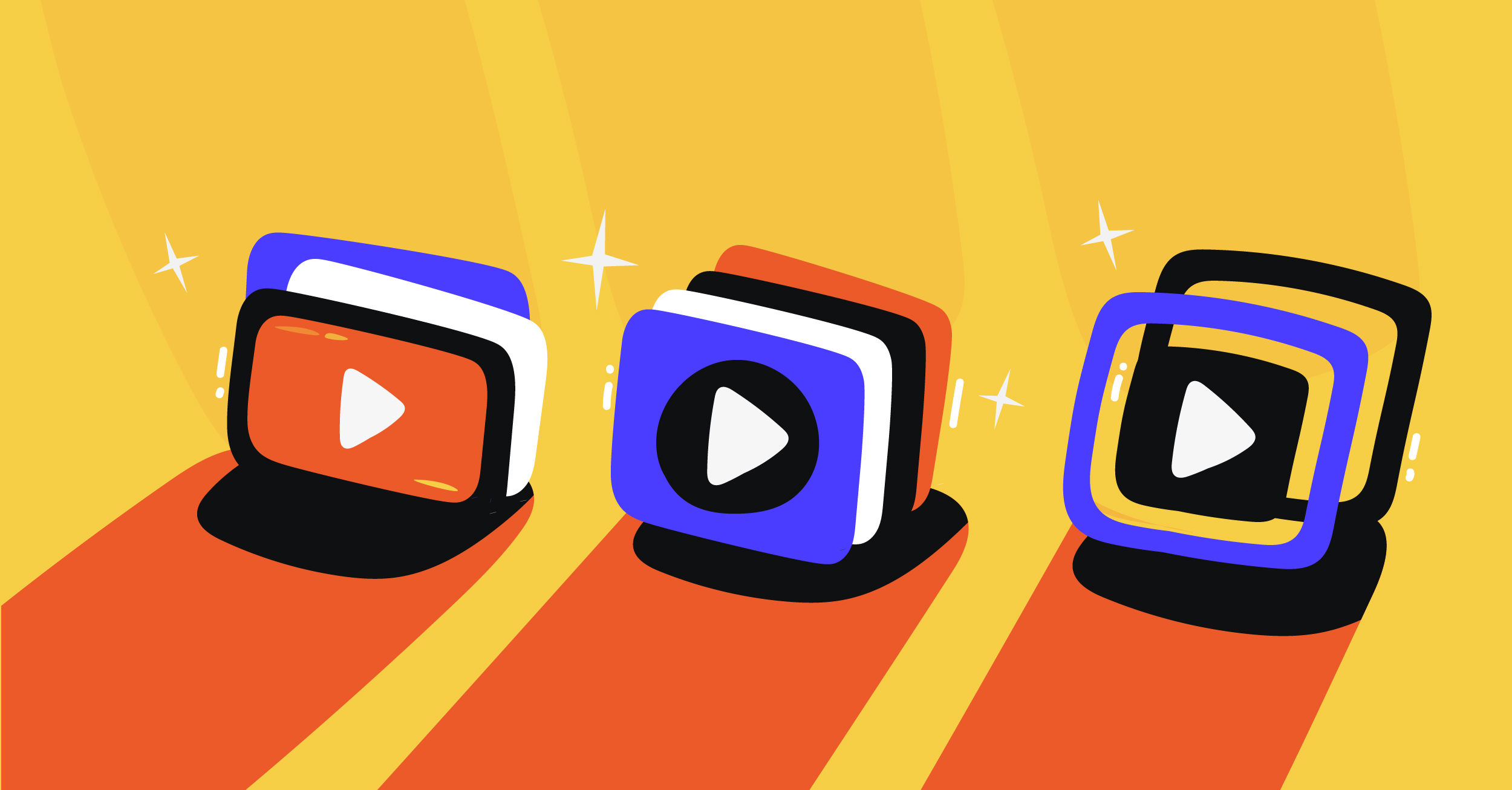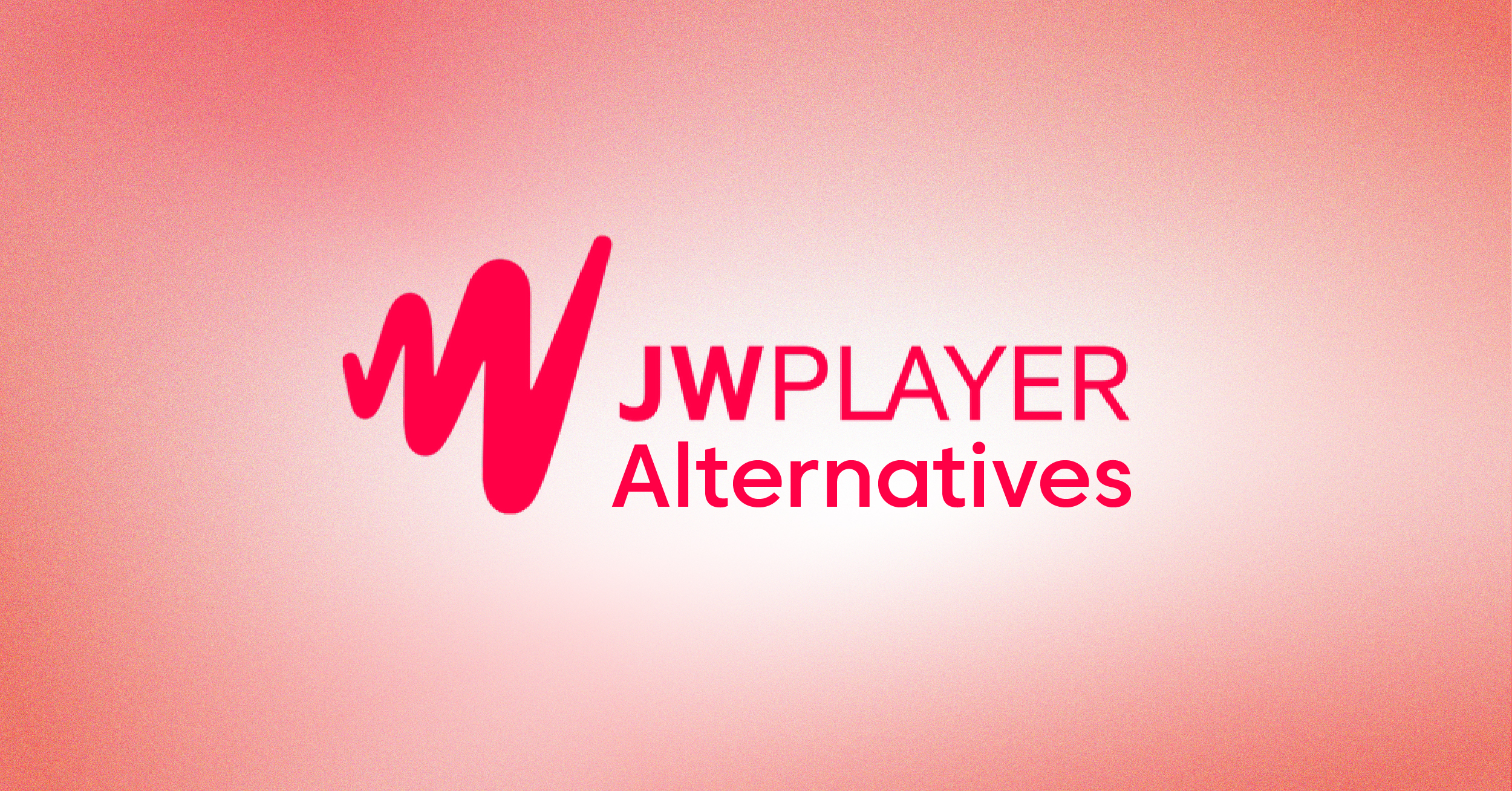Aspect ratio plays a key role in how we view content on screens. It affects the shape and size of the image we see. For content creators, choosing a specific aspect ratio is crucial for shooting videos and taking photos. It can make or break the viewing experience for your audience.
This blog will compare 4:3 and 16:9 aspect ratios. We will explore the pros and cons of these two aspect ratios and help you pick the best one for streaming.
What are Aspect Ratios?
The aspect ratio is the relationship between an image’s width and its height. The ratio of width and height is usually written as two numbers separated by a colon, like 4:3 or 16:9. The first number represents width, and the second represents height. The most common aspect ratios are:
- 16:9 – Standard widescreen format
- 4:3 – Traditional TV format
- 21:9 – Ultra-wide cinematic format
- 1:1 – Square format, popular on social media
- 9:16 – Vertical video format (16:9 rotated)
- 2:1 – Univisium format, gaining popularity in digital cinema
- 3:2 – Common in still photography
- 5:4 – Used in some older computer monitors
- 18:9 – Used in some modern smartphones
Aspect ratios determine how images fit on screens. They affect how much of the screen is filled and how the content looks. In video creation and photography, the right aspect ratio ensures your content looks good on various devices. It helps avoid black bars or distorted images. 4:3 was the standard aspect ratio for early TVs and computer monitors. 16:9 became popular with the rise of widescreen formats and high-definition content.
What is the 4:3 Aspect Ratio?
The 4:3 aspect ratio means the width is 4 units, and the height is 3 units. It’s also known as the “standard” or “fullscreen” ratio. This ratio was common in older TVs and early computer monitors. It’s nearly square, giving images a boxy look.

4:3 is still used in some professional settings and older video content. It’s also popular in retro-style games and certain types of photography. Some creators use 4:3 for a vintage feel or to stand out from widescreen content. In the early days of the motion picture industry, 4:3 was the film standard.
Pros of 4:3
- Fits older content perfectly without black bars
- Can create a unique, retro aesthetic
- Works well for certain types of games and photography
- Allows for larger, more visible gameplay areas in some games
- Can stand out among widescreen content
- May be preferred by some viewers for its classic look
- Requires less horizontal screen space, good for multi-tasking viewers
Cons of 4:3
- Doesn’t fit well on most modern displays
- Limited space for overlays and on-screen graphics
- Can look outdated to some viewers
- Not ideal for widescreen formats
What is the 16:9 Aspect Ratio?
The 16:9 aspect ratio means the width is 16 units, and the height is 9 units. It’s also called the “widescreen” ratio and is now the most popular aspect ratio. 16:9 is the standard for most modern displays and content.

It became popular with the rise of HDTV and full HD in the late 1990s. This ratio offers a wider view, similar to what we see in modern motion pictures. Most smartphones, TVs, and computer screens now use 16:9. It’s the go-to choice for most video content, including streaming and gaming. The 16:9 aspect ratio is ideal for larger screens and is preferred by the motion picture industry for many current productions.
Pros of 16:9
- Fits perfectly on most modern displays
- Provides a wider, more cinematic view
- More space for overlays and on-screen elements
- Standard for high-definition and full HD content
- Works well for most types of video creation and photography
Cons of 16:9
- It may not work well with older content
- Can crop or letterbox on some older displays
- It might not stand out as much among other content
How Do 4:3 and 16:9 Compare Visually?
4:3 and 16:9 ratios create very different visual experiences. 4:3 gives a more square image, filling older TV screens completely. It’s compact and focuses attention on the center of the frame.
16:9, being wider, offers a more cinematic view. It allows for more horizontal space in the frame. This extra width can be great for landscapes or action scenes. In gaming, 16:9 provides a wider field of view. This can be an advantage in many games.
However, 4:3 can be preferred in some competitive games for a tighter, more focused view. You’ll see black bars on the sides when viewing 4:3 content on a 16:9 screen. This is called pillarboxing. When viewing 16:9 content on a 4:3 screen, you’ll see black bars on top and bottom. This is called letterboxing.
These black bars ensure the original aspect ratio is maintained without stretching or cropping the image.
The Impact of Aspect Ratio on Content Creation
The aspect ratio greatly affects how viewers experience visual content. The right ratio ensures your content looks good on different devices and prevents distortion or loss of important visual elements.
16:9 is generally better for modern video creation and streaming. It fits most current displays without any adjustments. This ratio allows for a wider view, which can be more immersive. It’s especially good for gaming streams, where seeing more of the game world is beneficial.
However, 4:3 can work well for certain types of content. It might be preferred for older games or for a retro aesthetic. Some creators use 4:3 to stand out in a sea of widescreen content. The choice of aspect ratio can also affect post-processing and how overlays and graphics look on screen. 16:9 provides more horizontal space for these elements. 4:3 might require more creative placement of overlays and alerts. Mobile viewers are another consideration. Most smartphones use 16:9 or even wider ratios. 4:3 content will have significant black space on these devices.
Which Platforms Prefer Which Aspect Ratio?
Most major streaming and social media platforms now favor the 16:9 aspect ratio. YouTube, Twitch, and Facebook Live all recommend 16:9 for optimal viewing, and these platforms are designed for widescreen displays.
Netflix and other video-on-demand services also primarily use 16:9. This ratio works well across TVs, computers, and mobile devices. However, some platforms are more flexible.
Instagram, for example, uses square (1:1) posts for the main feed. However, it allows 16:9 IGTV and landscape photos, while Instagram Stories uses a 9:16 ratio.
TikTok prefers vertical video, with a 9:16 ratio (16:9 turned sideways). Twitch allows 4:3 streaming, but it’s not as common as 16:9.
Older gaming content or retro streams might use 4:3 on Twitch. YouTube can handle various aspect ratios, but 16:9 is still the norm. The platform preference often reflects the most common viewer devices. As most modern screens are widescreen, 16:9 has become the standard.
How to Choose the Right Aspect Ratio for Your Content
Choosing between 4:3 and 16:9 depends on several factors. First, consider your content type. For modern games, videos, and most photography, 16:9 is usually best. It fits well on most screens and provides a wider view. For retro games, vintage-style photos, or a unique aesthetic, 4:3 might be more suitable. Think about your target audience and their devices. If most watch on modern TVs or smartphones, 16:9 is a safe choice.
Consider the platforms you’ll use to share your content. Most favor 16:9 but check their specific guidelines. Your personal style matters, too. Some creators use 4:3 to stand out. Others prefer the wider canvas of 16:9 for creativity. Test both ratios if possible. See which one feels right for your content. Remember, you can always change your aspect ratio later if needed.
The Future of Aspect Ratios in Content Creation
The world of visual content is always evolving. While 16:9 is currently dominant, new ratios are emerging. Ultra-wide 21:9 is gaining popularity, especially in gaming and cinematography. Vertical video (9:16) is rising with mobile-first platforms like TikTok. Some platforms are becoming more flexible with aspect ratios. They aim to support various content types and creator preferences. We might see more adaptive content in the future. This could adjust aspect ratios based on the viewer’s device. Virtual and augmented reality may bring new aspect ratio challenges. As technology advances, we may see entirely new ways of framing content. For now, 16:9 remains the safe choice for most content creation situations.
Conclusion
Choosing between 4:3 and 16:9 for content creation depends on many factors. Your content type, audience, and personal style all play a role.
16:9 is the current standard, fitting well on most modern devices. It offers a wider view and more space for visual elements. 4:3 can work for specific content types or to create a unique look.
Regardless of your choice, consistency is key to a professional appearance. Remember, the right tools can help you deliver high-quality content in any aspect ratio. Understanding aspect ratios is crucial when shooting videos, taking photos, or creating for social media platforms. With this knowledge, you can focus on creating great content, knowing it will look good on any screen.







